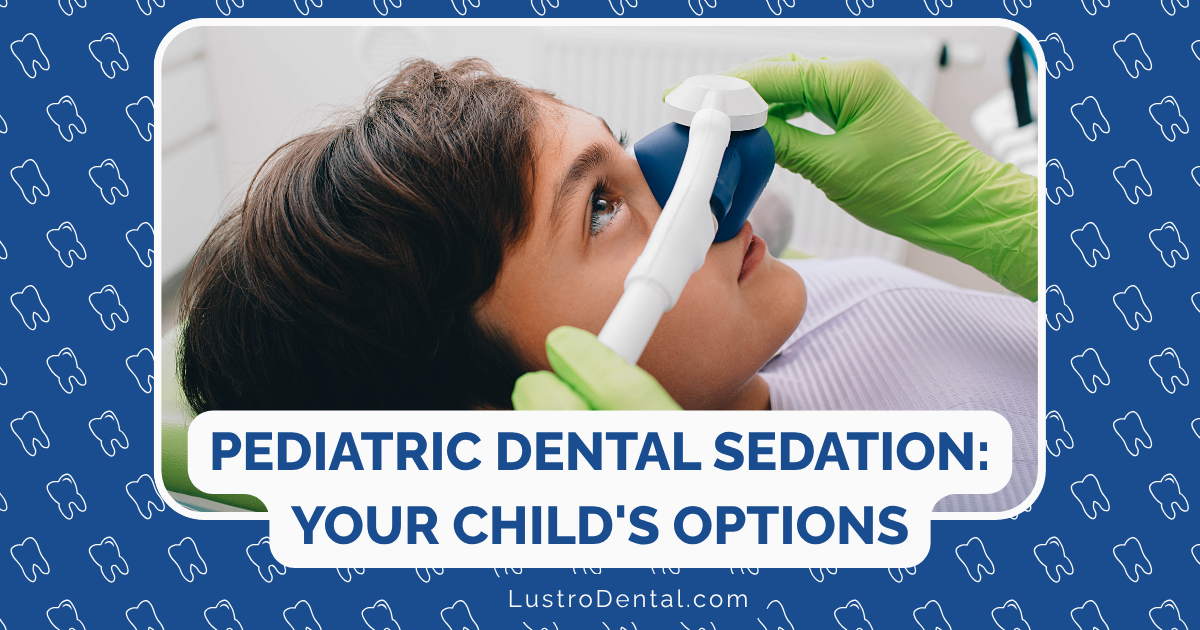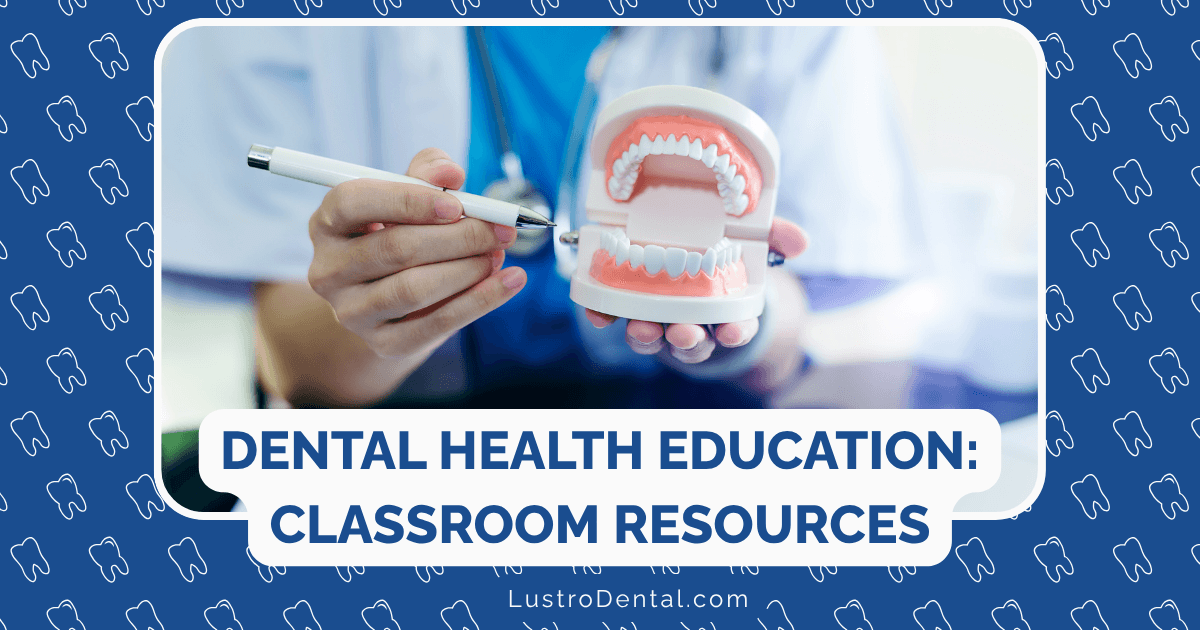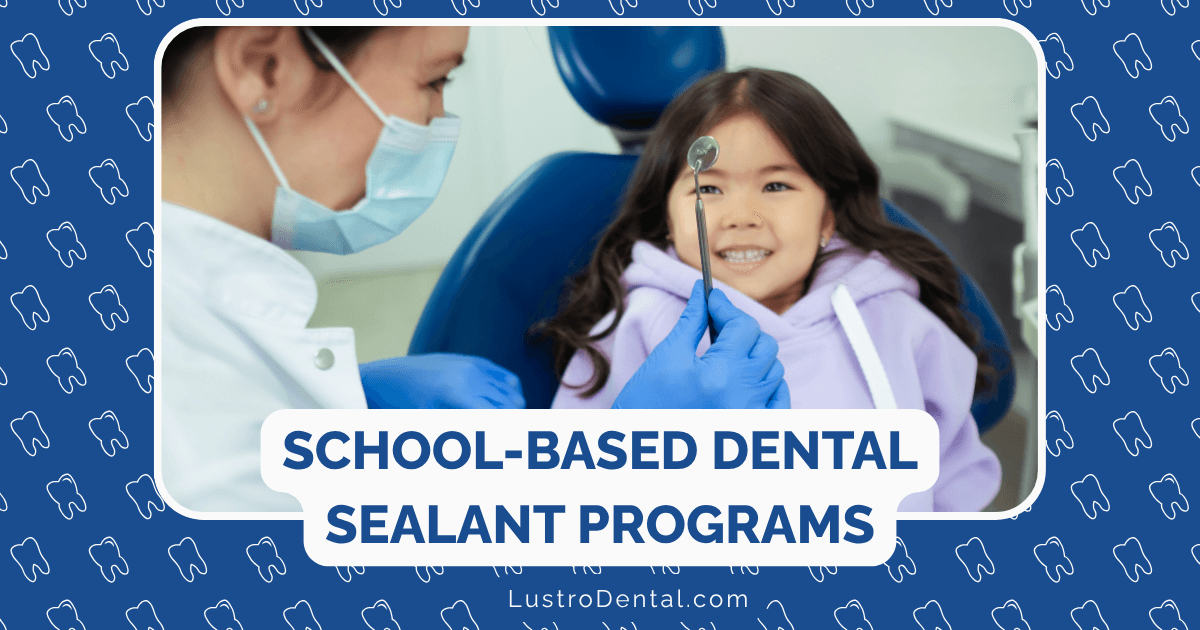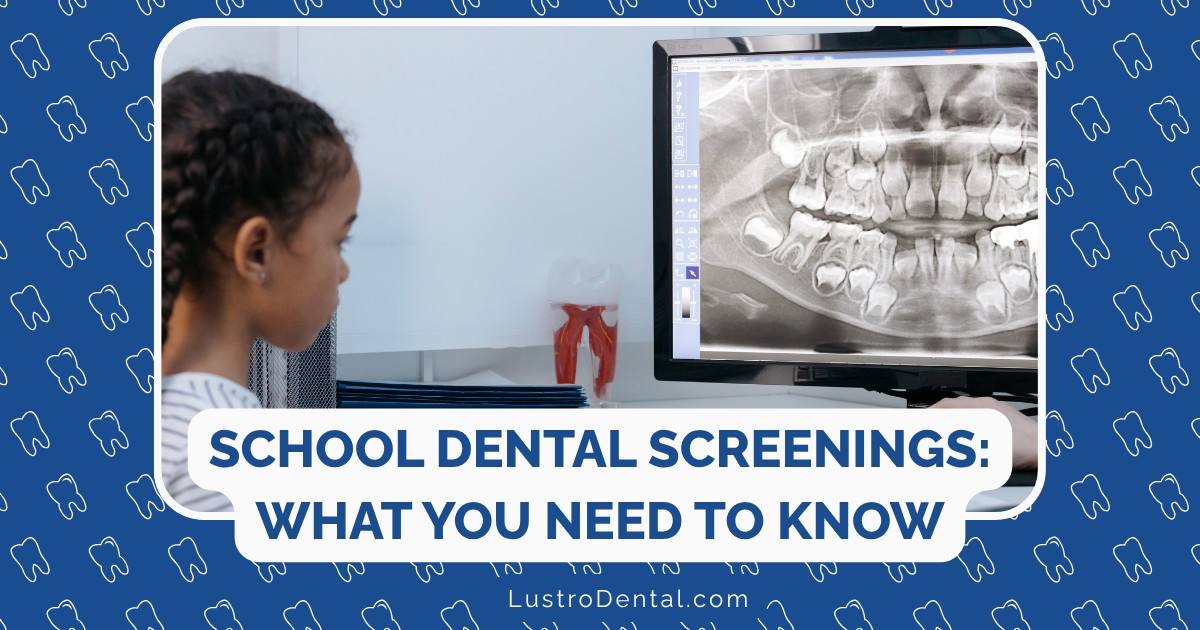Understanding Sedation Options for Children: From Nitrous Oxide to General Anesthesia

As parents, we want dental visits to be positive experiences for our children. Yet for some kids—whether due to anxiety, special needs, extensive treatment requirements, or young age—standard dental appointments can be challenging or even traumatic.
This is where dental sedation options come into play. As someone passionate about dental health education, I’ve seen how appropriate sedation can transform a potentially distressing experience into a manageable one, allowing necessary dental care to proceed while protecting a child’s emotional well-being.
However, the various sedation options available can seem overwhelming to parents. What’s the difference between nitrous oxide and oral sedation? When is general anesthesia necessary? What are the risks involved?
This comprehensive guide will walk you through the spectrum of pediatric dental sedation options, helping you understand when each might be appropriate and what to expect if your child’s dentist recommends sedation.
Why Sedation May Be Recommended for Children
Before discussing specific options, it’s important to understand why a dentist might recommend sedation for a child. According to the American Academy of Pediatric Dentistry, sedation in pediatric dentistry serves several important purposes:
1. Managing Anxiety and Fear
Dental anxiety affects approximately 5-20% of children, according to research published in the Journal of Dental Anesthesia and Pain Medicine. For these children, even routine cleanings can trigger significant distress.
2. Enabling Treatment for Young Children
Very young children (typically under age 4) may not have the cognitive ability to understand dental procedures or the emotional regulation to remain still during treatment.
3. Facilitating Care for Children with Special Needs
Children with certain medical, physical, or cognitive conditions may benefit from sedation to receive necessary dental care safely and comfortably.
4. Managing Extensive or Complex Treatment
Children requiring multiple or complex procedures might benefit from sedation to complete all necessary treatment in fewer appointments.
5. Preventing Traumatic Experiences
Perhaps most importantly, appropriate sedation can prevent negative dental experiences that might otherwise lead to long-term dental phobia.
Dr. Sarah Johnson, pediatric dentist at Children’s Dental Health Associates, explains: “Our goal is always to provide necessary treatment in the least restrictive manner possible. We start with basic behavior guidance techniques, but when those aren’t sufficient, sedation becomes an important tool to ensure children receive needed care while protecting their psychological well-being.”
The Spectrum of Sedation Options
Dental sedation exists on a spectrum from minimal relaxation to complete unconsciousness. Understanding these different levels helps clarify the various options available:
Levels of Sedation
1. Minimal Sedation (Anxiolysis)
- Child is relaxed but fully awake
- All protective reflexes remain intact
- Child can respond normally to verbal commands
- Cognitive function and coordination may be mildly impaired
- Breathing and cardiovascular function remain unaffected
2. Moderate Sedation (Conscious Sedation)
- Child is drowsy but can still be awakened with verbal commands
- Protective reflexes remain largely intact
- Child may not remember much of the procedure
- Breathing remains adequate, but cardiovascular function may be slightly affected
3. Deep Sedation
- Child is difficult to arouse but responds to repeated or painful stimulation
- Ability to maintain airway independently may be impaired
- Spontaneous ventilation may be inadequate
- Cardiovascular function is usually maintained
4. General Anesthesia
- Child is completely unconscious
- Cannot be aroused even with painful stimulation
- Ability to maintain airway independently is often impaired
- Spontaneous ventilation is often inadequate
- Cardiovascular function may be impaired
Now, let’s explore the specific sedation methods used in pediatric dentistry, from the mildest to the most intensive.
Nitrous Oxide: The Mildest Option
What Is It?
Nitrous oxide, often called “laughing gas,” is a colorless, odorless gas mixed with oxygen and administered through a small mask placed over the child’s nose.
How It Works
Nitrous oxide works quickly to produce a mild calming effect. Children remain awake and can respond to questions and directions, but they feel more relaxed and may experience a sense of euphoria or tingling. The gas is eliminated from the body within minutes after the mask is removed.
Appropriate Uses
Nitrous oxide is suitable for:
- Children with mild to moderate anxiety
- Cooperative children who need help relaxing
- Brief, non-invasive procedures
- Children who can breathe through their nose
- Children without certain medical conditions (e.g., severe asthma, cystic fibrosis)
Benefits
- Rapid onset (takes effect within minutes)
- Easily adjustable during treatment
- Quick recovery (effects dissipate within 5 minutes after removal)
- No fasting required beforehand
- Children can typically return to normal activities immediately
- Excellent safety profile with minimal side effects
Limitations
- Not sufficient for children with severe anxiety or behavioral challenges
- Not appropriate for children who cannot cooperate at all
- Limited pain control (usually supplemented with local anesthesia)
- Not suitable for extensive or very invasive procedures
What Parents Should Know
Dr. Michael Chen, pediatric anesthesiologist at American Society of Anesthesiologists, notes: “Nitrous oxide is considered the safest form of sedation in dentistry. The child remains conscious and maintains all protective reflexes. Most children report a pleasant experience, often describing feelings of warmth, tingling, or floating.”
Before nitrous oxide administration:
- A light meal is acceptable (unlike deeper forms of sedation)
- Inform your dentist if your child has a cold or nasal congestion
- Let your dentist know about any medications your child takes
After nitrous oxide:
- Effects wear off quickly
- No special monitoring is needed
- Children can return to normal activities immediately
Oral Sedation: The Next Step Up
What Is It?
Oral sedation involves administering medication by mouth (liquid or pill) to produce a calming effect. The medications used most commonly include:
- Benzodiazepines (e.g., midazolam, diazepam)
- Antihistamines (e.g., hydroxyzine)
- Alpha-2 agonists (e.g., dexmedetomidine)
- Combinations of these medications
How It Works
Oral sedatives are typically given 30-60 minutes before the procedure. Depending on the dosage and the child’s response, they can produce minimal to moderate sedation. Children may become drowsy but usually remain conscious and able to respond to verbal commands.
Appropriate Uses
Oral sedation is suitable for:
- Children with moderate anxiety
- Children who cannot cooperate with nitrous oxide alone
- Longer or more invasive procedures
- Children who can take oral medication
- Children without certain medical conditions that might contraindicate specific medications
Benefits
- No needles required (important for children with needle phobia)
- Can be administered at home or in the office
- Provides deeper relaxation than nitrous oxide
- May produce some amnesia (child may not remember the procedure)
- Less expensive than IV sedation or general anesthesia
Limitations
- Unpredictable absorption and effect
- Cannot be easily adjusted during the procedure
- Longer recovery time
- Potential for more significant side effects
- Requires fasting before the appointment
What Parents Should Know
The American Academy of Pediatrics emphasizes several important considerations for oral sedation:
Before oral sedation:
- Follow fasting guidelines strictly (typically no food for 6-8 hours, clear liquids may be allowed up to 2 hours before)
- Dress your child in loose, comfortable clothing
- Bring a comfort item (blanket, stuffed animal)
- Arrange for two adults after the appointment—one to drive and one to monitor the child
During oral sedation:
- Vital signs (heart rate, blood pressure, oxygen saturation) should be monitored
- A qualified professional should be dedicated to monitoring your child
- Oxygen and emergency equipment should be available
After oral sedation:
- Effects may last several hours
- Child should be monitored closely at home
- Activities should be restricted for the remainder of the day
- Watch for potential side effects (nausea, vomiting, prolonged drowsiness)
Dr. Lisa Williams, pediatric dentist at Pediatric Dental Association, advises: “The effectiveness of oral sedation can vary from child to child. Some children become appropriately relaxed, while others may experience a ‘paradoxical reaction’ where they become more agitated. This unpredictability is one of the challenges of oral sedation.”
Intranasal Sedation: A Specialized Approach
What Is It?
Intranasal sedation involves administering medication through the nose using a specialized atomizer. The most common medication used is midazolam.
How It Works
The medication is absorbed through the nasal mucosa, allowing for relatively rapid onset (typically 10-15 minutes). The level of sedation is usually moderate.
Appropriate Uses
Intranasal sedation is suitable for:
- Children who need moderate sedation
- Situations where rapid onset is desirable
- Children who may have difficulty taking oral medication
- Brief procedures
Benefits
- Faster onset than oral sedation
- No needles required
- More predictable effect than oral sedation
- Can be administered just before the procedure
Limitations
- Some children dislike the nasal administration
- May cause temporary burning sensation in the nose
- Not suitable for children with nasal congestion
- Limited duration of action
What Parents Should Know
Intranasal sedation is less commonly used than other methods but can be an excellent option in specific situations. The preparation and aftercare considerations are similar to those for oral sedation.
Intravenous (IV) Sedation: Deeper and More Controlled
What Is It?
IV sedation involves administering sedative medications directly into the bloodstream through an intravenous line.
How It Works
Because the medication enters the bloodstream directly, the onset is rapid, and the level of sedation can be precisely controlled and adjusted throughout the procedure. IV sedation typically produces moderate to deep sedation.
Appropriate Uses
IV sedation is suitable for:
- Children with high anxiety levels
- More extensive or invasive procedures
- Children who have not responded well to other sedation methods
- Older children and adolescents who can cooperate with IV placement
Benefits
- Rapid onset
- Precise control of sedation level
- Ability to administer additional medications if needed
- More predictable effect than oral sedation
- Potential for deeper sedation than oral or intranasal methods
Limitations
- Requires IV placement (which can be anxiety-provoking itself)
- Typically requires specialized personnel (often an anesthesiologist or nurse anesthetist)
- Higher cost than nitrous oxide or oral sedation
- Longer recovery time
- More potential side effects
What Parents Should Know
IV sedation in pediatric dentistry is typically administered by a dental anesthesiologist, medical anesthesiologist, or specially trained dentist with advanced sedation certification.
Before IV sedation:
- Strict fasting guidelines must be followed
- Medical clearance may be required
- Detailed medical history review is essential
During IV sedation:
- Continuous monitoring of vital signs is mandatory
- Supplemental oxygen is often provided
- At least one professional is dedicated to monitoring the child
- Advanced emergency equipment must be available
After IV sedation:
- Recovery period in the office is required
- Effects may last several hours
- Child should be monitored closely at home
- Activities should be restricted for 24 hours
- Watch for potential side effects
General Anesthesia: The Deepest Level
What Is It?
General anesthesia involves medications that render the child completely unconscious for the duration of treatment.
How It Works
General anesthesia may be initiated with inhaled gases, intravenous medications, or a combination. Once the child is unconscious, an airway is secured (often with intubation), and the anesthesia is maintained throughout the procedure.
Appropriate Uses
General anesthesia is suitable for:
- Very young children who cannot cooperate with other methods
- Children with special healthcare needs that prevent cooperation
- Extensive treatment needs requiring long procedures
- Children with severe dental anxiety who have not responded to other approaches
- Some medical conditions that make other sedation options unsafe
Benefits
- Complete unconsciousness (child has no awareness or memory of the procedure)
- Immobility during treatment
- Ability to complete extensive treatment in a single visit
- Controlled airway management
- No cooperation required from the child
Limitations
- Highest level of risk among sedation options
- Requires specialized setting (hospital or ambulatory surgery center)
- Most expensive option
- Longest recovery period
- Most potential side effects
- Requires intubation in most cases
What Parents Should Know
General anesthesia for dental procedures is typically performed in a hospital setting or ambulatory surgery center by an anesthesiologist or dental anesthesiologist.
Before general anesthesia:
- Comprehensive medical evaluation is required
- Strict fasting guidelines must be followed
- Detailed consent process
- Laboratory tests may be needed
During general anesthesia:
- Child is completely unconscious
- Breathing is often controlled with a breathing tube
- Continuous monitoring of all vital functions
- Team approach with anesthesia provider and dental provider
After general anesthesia:
- Formal recovery period in a post-anesthesia care unit
- Potential for nausea, vomiting, sore throat, confusion
- Activities restricted for 24-48 hours
- Follow-up may be recommended
Dr. James Wilson, pediatric dental anesthesiologist at Society for Pediatric Anesthesia, explains: “While general anesthesia carries the highest risk among dental sedation options, it’s important to remember that it’s performed thousands of times daily across the country with an excellent safety record when administered by qualified professionals in appropriate settings.”
Safety Considerations and Guidelines
Provider Qualifications
The American Academy of Pediatric Dentistry and American Academy of Pediatrics have established guidelines regarding who should administer different levels of sedation:
- Nitrous oxide: Can be administered by dentists with appropriate training
- Minimal oral sedation: Requires specific training beyond dental school
- Moderate sedation: Requires advanced training and certification
- Deep sedation/general anesthesia: Requires specialized training equivalent to anesthesiologists or a dedicated anesthesia provider
Facility Requirements
Safety standards also address the setting where sedation is provided:
- Equipment requirements: Monitoring devices, emergency medications, oxygen delivery systems
- Staffing requirements: For moderate sedation and deeper, a dedicated person whose sole responsibility is monitoring the patient
- Emergency protocols: Written emergency plans and regular emergency drills
- Recovery facilities: Appropriate space and equipment for post-sedation monitoring
Updated Guidelines
In 2019, the AAP and AAPD updated their guidelines for deep sedation and general anesthesia, emphasizing that:
- At least two individuals trained in sedation must be present
- One must be an independent observer solely dedicated to monitoring
- For deep sedation or general anesthesia, the independent observer must be an anesthesia professional
Questions to Ask Your Provider
Before consenting to sedation for your child, consider asking:
- What is the provider’s training and experience with this type of sedation?
- How many similar procedures have they performed?
- What monitoring will be used during the procedure?
- Who will be responsible for monitoring my child?
- What emergency equipment and medications are available?
- What are the specific risks for my child?
- What alternatives might be considered?
- Where will the procedure be performed, and why was this location chosen?
Making the Decision: Factors to Consider
Deciding on the appropriate level of sedation for your child involves weighing several factors:
Child-Specific Factors
- Age and developmental level: Younger children may require deeper sedation due to limited understanding and cooperation
- Anxiety level: Children with severe anxiety may benefit from deeper sedation
- Medical history: Certain conditions may make some sedation options safer than others
- Previous sedation experiences: How a child has responded to sedation in the past
- Extent of treatment needed: More extensive treatment may require deeper sedation
Procedure-Specific Factors
- Duration: Longer procedures may require deeper sedation
- Invasiveness: More invasive procedures typically require more profound pain control
- Urgency: How critical is the timing of the treatment?
Provider and Facility Factors
- Provider expertise: Experience and training with different sedation methods
- Available monitoring: Equipment and personnel for appropriate monitoring
- Emergency preparedness: Ability to manage potential complications
Preparing Your Child for Sedation
Age-Appropriate Communication
How you discuss the upcoming procedure depends on your child’s age:
- Young children (under 6): Keep explanations simple and positive. Avoid words like “shot,” “needle,” or “put to sleep”
- School-age children: Provide more details but still use non-threatening language
- Adolescents: Be honest and direct, addressing specific concerns
Practical Preparation
- Follow all pre-sedation instructions exactly, especially fasting guidelines
- Dress your child in loose, comfortable clothing
- Remove nail polish (interferes with monitoring equipment)
- Bring comfort items (blanket, stuffed animal)
- Plan for appropriate transportation and supervision afterward
After Sedation: What to Expect
Recovery Process
The recovery process varies significantly based on the type of sedation:
- Nitrous oxide: Effects dissipate within minutes; normal activities can resume immediately
- Oral/intranasal sedation: Effects may last 4-6 hours; restricted activities for the remainder of the day
- IV sedation: Effects may last 6-8 hours; restricted activities for 24 hours
- General anesthesia: Effects may last 24+ hours; restricted activities for 24-48 hours
Potential Side Effects
Common side effects by sedation type:
- Nitrous oxide: Minimal—occasionally mild nausea or headache
- Oral/intranasal sedation: Prolonged drowsiness, nausea, vomiting, hiccups, paradoxical reaction (increased agitation)
- IV sedation: Similar to oral sedation but potentially more pronounced
- General anesthesia: Sore throat, nausea, vomiting, confusion, behavioral changes
When to Seek Help
Contact your provider immediately if you observe:
- Difficulty breathing or unusual breathing patterns
- Lips or skin turning blue
- Difficulty waking your child
- Persistent vomiting
- Severe pain
- Fever
- Any concerning symptoms that worsen rather than improve
Special Considerations for Children with Medical Conditions
Children with certain medical conditions require special consideration when planning sedation:
Respiratory Conditions
Children with asthma, sleep apnea, or other respiratory conditions may:
- Have increased sensitivity to respiratory depressant effects of sedatives
- Require additional monitoring
- Benefit from consultation with their specialist before sedation
Cardiac Conditions
Children with congenital heart defects or other cardiac issues may:
- Need antibiotic prophylaxis before certain procedures
- Require specialized monitoring during sedation
- Need coordination between their cardiologist and dental team
Neurological Conditions
Children with seizure disorders, cerebral palsy, or other neurological conditions may:
- Have unpredictable responses to sedative medications
- Require adjustments to standard protocols
- Benefit from deeper levels of sedation in some cases
Metabolic Disorders
Children with diabetes, thyroid disorders, or other metabolic conditions may:
- Need special consideration for medication timing and fasting
- Require additional monitoring of blood glucose or other parameters
- Need consultation with their specialist before sedation
Conclusion: Partnering for Your Child’s Dental Health
Dental sedation, when appropriately selected and administered, can be a valuable tool in providing necessary dental care to children who might otherwise go untreated due to anxiety, behavioral challenges, or complex treatment needs.
The key to successful sedation experiences lies in informed decision-making, appropriate provider selection, and careful adherence to established safety protocols. By understanding the spectrum of available options and asking the right questions, parents can partner effectively with dental providers to ensure their children receive necessary care in the safest, most comfortable manner possible.
Remember that the goal of sedation is not just to complete a dental procedure but to do so in a way that preserves your child’s psychological well-being and fosters a positive attitude toward dental care that will serve them throughout their lifetime.
Has your child experienced dental sedation? What questions do you have about the different options? Share your thoughts or concerns in the comments below.







